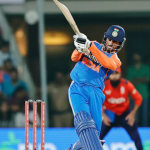The D2C footwear brand has launched Blinc, India’s first hands-free sneakers, and a host of innovative products such as Lofos, Freestep and Waves
Backed by Rukam Capital and other investors, Yoho has secured INR 47 Cr and uses the funding for R&D, product development and overseas expansion
Its plans include launching new categories, diversifying to 300 styles and establishing premium EBOs
From the sophisticated sandals and footwear of ancient Greece and Rome to the lavish high heels by Debbie Wingham or Antonio Vietri's gold and diamond-encrusted shoes containing fragments of a five-century-old meteorite (priced at $19.9 million), footwear has long been a symbol of both style and wealth worldwide. India, now the second-largest producer and consumer of footwear after China, is also stepping up its game. With the market projected to reach $36 billion by 2030, up from $15.9 billion in 2023, India is set to grow at a compound annual growth rate (CAGR) of more than 12%.
This growth can largely be attributed to the domestic market, fueled by rising disposable incomes and changing preferences driven by technological and design innovations. After all, who wouldn't want a trendy, all-weather “performance” brand for jogging or hiking, or a pair of Insta-worthy dress shoes designed by celebrities and artists? As a result, the market has split into two segments: aspirational buyers seeking premium products and the masses opting for low-cost, less comfortable alternatives.
The gap between these segments was filled by Yoho, a comfort-first, budget-friendly direct-to-consumer (D2C) brand offering functional shoes for everyday use. Founded by corporate veterans Ahmad Hushsham and Prateek Singhal, Yoho has carved a niche for "second shoes"—the pairs worn for casual use when you reserve your best pair for formal occasions—without compromising on quality or style.
Initially, Yoho wasn’t designed with sneakerheads in mind. The brand aimed to create comfortable shoes akin to Skechers, the well-known American brand. However, sneakers quickly became the market’s preferred choice, pushing the founders to innovate with Blinc, India’s first hands-free sneakers.
Yoho expanded its product range over time, introducing Lofos (a flexible loafer), Freestep (a spacious slip-on), and Waves (a slipper offering excellent arch support). Today, Yoho offers more than 100 styles and over 700 SKUs for both men and women, priced between INR 1,000 and INR 2,500. The products, available in a variety of colors, rival Western brands in terms of both quality and style.
The brand has adopted an omnichannel business model, targeting customers across metro cities and Tier I and II towns. With a goal to reach INR 100 crore in revenue by FY25—an impressive 400% growth from the INR 20 crore generated in FY24—Yoho is on track to expand its presence further.
Yoho's unique combination of comfort, style, and affordability has caught the attention of investors. The brand recently raised INR 27 crore in its pre-Series B round, bringing its total funding to INR 47 crore. These funds will be used for research and development, product enhancement, and strategic expansion into international markets.
Factsheet: From Serendipity to Success – Yoho's Growth Journey
Yoho was founded to address a significant gap in the Indian market: the lack of comfortable and ergonomic shoes that were both affordable and widely available. This gap became even more apparent during the pandemic, when the demand for comfort and health-focused products surged. According to Hushsham and Singhal, the timing of Yoho's launch was perfect, helping the brand generate INR 3 crore in its first year.
The brand’s inception was quite serendipitous. Hushsham, an alumnus of Chhatrapati Sahuji Maharaj Kanpur University, had previously worked at Jabong (later acquired by Flipkart’s Myntra) and Paytm Mall, where he led the footwear category. Singhal, a mechanical engineer from IIT Delhi, had experience working in healthcare (at Tata 1mg) and foodtech (at Zomato). They met through a mutual friend in Kanpur, and their shared passion for creating affordable, comfortable shoes quickly became the foundation for Yoho.
Launching the brand was not without its challenges, especially in a market already crowded with established players like Bata and Metro Brands, as well as multinational companies. Convincing mass-market buyers to embrace a value-added product was no easy feat. To overcome these obstacles, the founders adopted four key strategies to carve out a place for Yoho in the competitive footwear market.
Leave a comment
Your email address will not be published. Required fields are marked *
Add a newsletter to your widget area.










